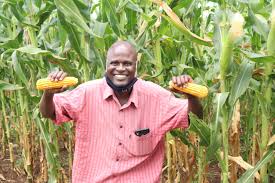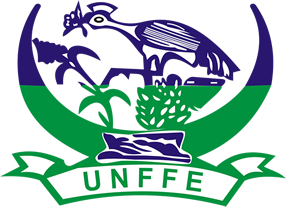Agriculture is a vital part of Uganda’s economy, but the sector faces numerous challenges, including soil degradation, climate change, and population pressure. To ensure long-term food security and environmental sustainability, adopting sustainable agriculture practices is essential. These practices aim to increase productivity while preserving the natural resources and ecosystems that future generations will depend on.
Ensuring Food Security and Environmental Health
Based on the 1996 World Food Summit, food security is defined when all people, at all times, have physical and economic access to sufficient safe and nutritious food that meets their dietary needs and food preferences for an active and healthy life.
As the world population grows, it is essential to increase sustainable agricultural production, improve the global food supply chain, decrease food loss and waste. Improving yields on agricultural lands and restoration of degraded lands through sustainable agriculture techniques can also relieve pressure to clear forests for agriculture and better management of water through improved irrigation and storage technologies.
Discussion on a few Key Healthy and Sustainable Agriculture Practices
- Agroecology
- Definition: Agroecology integrates ecological principles into agricultural systems, emphasizing biodiversity, soil health, and ecological resilience.
- Practices: Incorporating diverse crops and livestock, maintaining habitat for beneficial organisms, and using natural processes for pest and disease management.
- Organic Farming
- Definition: Organic farming avoids synthetic chemicals, focusing on natural inputs and processes to maintain soil health and ecosystem balance.
- Practices: Utilizing organic fertilizers such as compost and manure, employing crop rotations and cover crops, and implementing biological pest control methods.
- Permaculture
- Definition: Permaculture designs agricultural landscapes that mimic natural ecosystems, aiming for sustainability and self-sufficiency.
- Practices: Creating multi-functional landscapes with perennial plants, integrating animals, and using renewable resources and energy-efficient technologies.
- Conservation Agriculture
- Definition: Conservation agriculture focuses on minimal soil disturbance, maintaining soil cover, and crop diversification to enhance soil health and productivity.
- Practices: No-till or minimum tillage farming, using cover crops to protect the soil, and rotating crops to improve soil structure and fertility.
- Agroforestry
- Definition: Agroforestry combines trees and shrubs with crops and livestock to create sustainable and productive land-use systems.
- Practices: Planting trees as windbreaks, integrating fruit and nut trees with annual crops, and using forest farming techniques to enhance biodiversity and resilience.
- Integrated Pest Management (IPM)
- Definition: IPM combines multiple pest control methods to reduce reliance on chemical pesticides and minimize environmental impact.
- Practices: Monitoring pest populations, using biological controls like predators and parasites, employing cultural practices such as crop rotation, and applying chemical controls only when necessary.
- Water Conservation
- Definition: Water conservation practices ensure the efficient use of water resources in agriculture, crucial for sustainability in arid and semi-arid regions.
- Practices: Implementing drip irrigation, rainwater harvesting, constructing ponds and reservoirs, and using mulch to retain soil moisture.
- Soil Health Management
- Definition: Soil health management focuses on maintaining and enhancing soil fertility and structure through sustainable practices.
- Practices: Adding organic matter through compost and green manures, avoiding overgrazing, and practicing crop rotation and intercropping.
- Sustainable Livestock Management
- Definition: Sustainable livestock management practices aim to reduce environmental impact and improve animal welfare.
- Practices: Rotational grazing, integrating livestock with crop production, reducing antibiotic use, and providing adequate space and nutrition for animals.
Benefits of Healthy and Sustainable Agriculture
- Environmental Protection
- Soil Conservation: Reducing soil erosion and degradation through minimal tillage, cover crops, and organic matter addition.
- Biodiversity Enhancement: Promoting diverse agricultural systems that support a wide range of plant and animal species.
- Water Conservation: Efficient water use practices reduce waste and protect water resources.
- Economic Resilience
- Cost Savings: Lower input costs from reduced chemical use and increased reliance on natural processes.
- Market Opportunities: Growing consumer demand for organic and sustainably produced foods offers premium pricing and new market niches.
- Risk Reduction: Diversified farming systems are more resilient to market fluctuations and climate change impacts.
- Human Health
- Nutrient-Rich Produce: Organic and sustainably grown crops often have higher nutrient levels and fewer chemical residues.
- Safe Food Supply: Reduced pesticide use decreases the risk of harmful residues in food, protecting consumer health.
- Farmer Health: Less exposure to toxic chemicals improves the health and safety of farmers and farm workers.
- Social Well-Being
- Community Engagement: Sustainable practices often involve community collaboration and knowledge sharing, strengthening social bonds.
- Food Security: Improved productivity and resilience of farming systems contribute to stable and reliable food supplies.
Challenges and Solutions
- Knowledge and Training
- Challenge: Lack of knowledge and training can hinder the adoption of sustainable practices.
- Solution: Extension services, farmer field schools, and training programs can provide education and support to farmers.
- Access to Resources
- Challenge: Limited access to resources like organic inputs, quality seeds, and financial services.
- Solution: Develop supply chains for sustainable inputs, improve access to credit, and support farmer cooperatives and networks.
- Policy Support
- Challenge: Inadequate policy support for sustainable agriculture can slow its adoption.
- Solution: Governments should create favorable policies, provide subsidies, and invest in research and development to promote sustainable practices.
Conclusion
Healthy and sustainable agriculture practices are essential for ensuring long-term food security, protecting the environment, and promoting the well-being of farming communities. By adopting methods such as agroecology, organic farming, permaculture, and conservation agriculture, farmers can enhance productivity, improve soil health, and reduce environmental impact. Continued support from governments, NGOs, and the private sector will be crucial in promoting and scaling these practices, ensuring a resilient and prosperous future for global agriculture.




